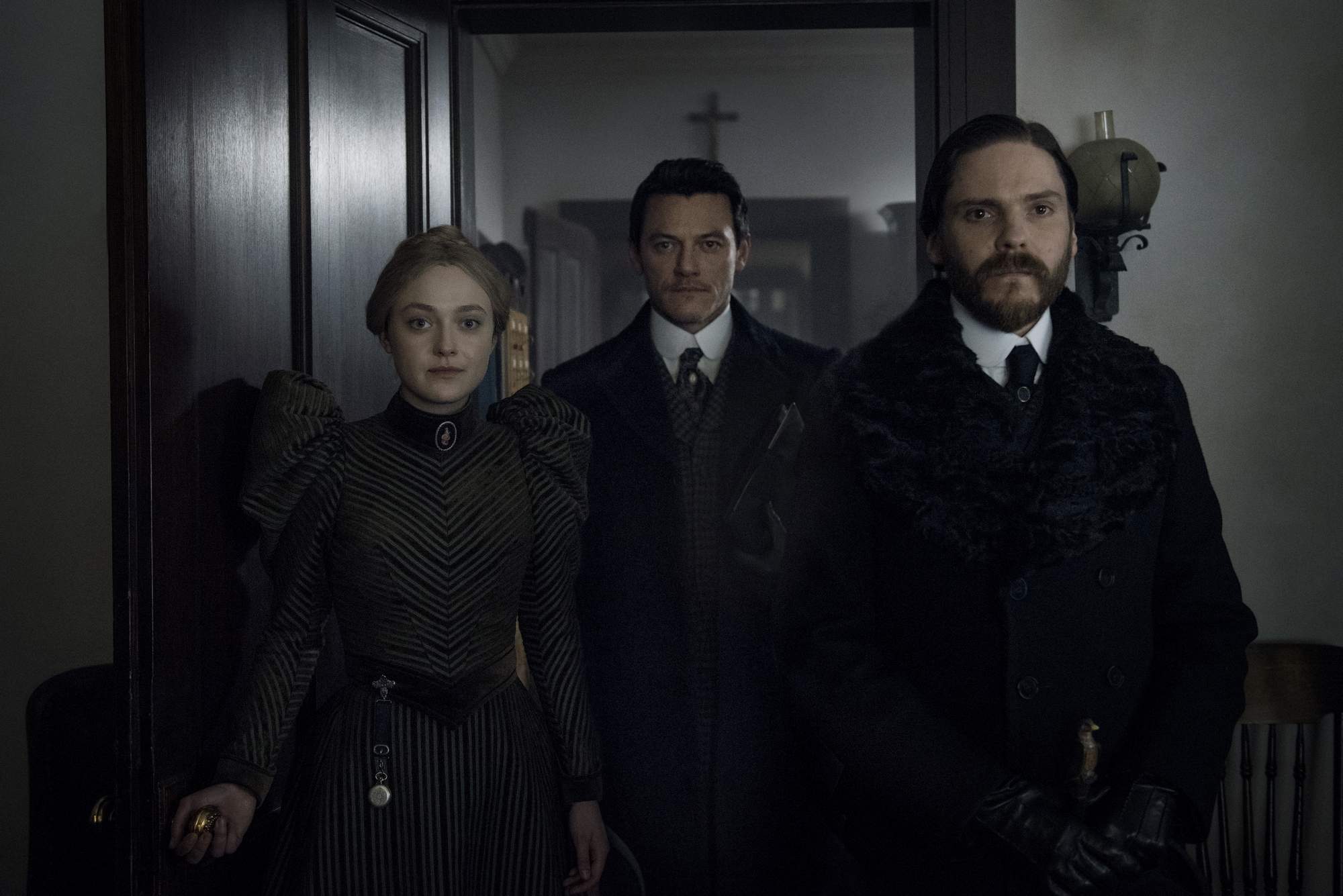Last year, Netflix’s “Mindhunter” drew audiences back to the mid-’70s early days of criminal psychology and profiling; TNT’s “The Alienist” does the same, but journeys back quite a bit further, to 1893. Those seeking a gorgeous, gothic costume drama will find it here. So will those hungering for a pulpy, bloody mystery or two. But if you’re in search of a nuanced exploration of violent minds, and of the minds belonging those who study them, you may be slightly disappointed. In the two episodes provided to critics, at least, “The Alienist” spends more time telling you what’s going on beneath the surface than allowing for any real depth to emerge. Here, subtext matters little. Wait long enough, and they’ll spell it all out for you in great big bloody letters.
Dr. Lazlo Kreizler (Daniel Brühl) is an alienist—a long-since retired name for a job we’d now call ‘criminal psychiatrist’—who’s haunted by the death of a young patient and his sister. The gruesome murder of a boy prostitute, killed, like the prior victim, while wearing a young girl’s clothes, brings this older horror to the surface. Convinced that the two killings were performed by the same person, and that the killer is likely to strike again, he convinces Police Commissioner Theodore Roosevelt (Brian Geraghty) to allow him to secretly investigate on his own, away from the prying eyes of corrupt officers like Captain Connor (David Wilmot). He’s joined in this pursuit by friend and illustrator John Moore (Luke Evans), Sara Howard (Dakota Fanning), the first woman hired by the Police Department, and others who believe that the suspicious, newfangled sciences of psychology, fingerprinting, and the like can be used to help stop a murderer almost certain to strike again. The stakes are high, and their own fears and regrets can’t be allowed to interfere.
If you ignore that last little bit, “The Alienist” has much to offer. As directed by executive producer Jakob Verbruggen (“London Spy”), the pace is often stately, but never lackadaisical; instead, the slowness with which the wheels turn puts viewers on an even keel with Kreizler, Moore, and Howard, whose sense of urgency is exacerbated by the red tape, corruption, and dead ends which slow them down. It’s a clever trick Verbruggen uses, even in the opening moments: a disbelieving discovery slowly builds, cresting into a frenzied moment of alarm, which is then yanked back down into a hushed kitchen and the whispers of a child, which leads in turn to a frenzied carriage ride, which gives way to the unsettling stillness of a crime scene. This is a well Verbruggen returns to with frequency, and nearly every instance is successful, none more so than a sequence in which Kreizler chases a man on foot, juxtaposed with two forensic experts (Matthew Shear and Douglas Smith) carefully reconstructing and examining a skeleton. It’s chasing a killer, in more ways that one—the first, a blood-pounding manhunt, the second a slow trawl for perfect, indisputable facts.
If some of the success of “The Alienist” is due to Verbruggen’s deft sense of tempo, the same is doubly true of his sense of style. This is the most expensive series in TNT’s history, and it shows. The costumes are sumptuous, but lived-in, finely made and textured but never fantastical—corsets leave welts, fine shoes are covered in mud, expertly-pressed collars wilt with wear. The production design rewards careful viewers with similarly rich detail, and the score, by Rupert Gregson-Williams (“Wonder Woman”) slithers and pounds in turn. The camerawork impresses throughout, in both invasive closeups and in those sweeping moments of chaos. Only the occasional exterior shot falls flat. Budapest stands in for 19th century New York, and the effect is mostly successful, but when Verbruggen goes big—as with an early shot, which zooms back and back until the city can be glimpsed from just over the shoulder of Lady Liberty—the technical razzle dazzle pokes holes in what’s an otherwise immersive illusion.
It’s also more than a bit on the nose, which leads to the other, much larger issue that plagues these early episodes. “The Alienist” never met a direct statement it didn’t like. This is a series that, visually speaking, is “Hannibal”-lite, bringing a lush sensibility to its moments of horror and gore. But in nearly every other sense, “Hannibal” it ain’t. There’s no inner life left to the imagination, nothing we’re meant to intuit. Instead, “The Alienist” tells us exactly what to think. And take this line from Kreizler: “Only if I become him, if I cut the child’s throat myself, if I run my knife through a helpless body and pluck innocent eyes from a horrified face, only then will I come to truly understand what I am … Yes, I must follow this wherever it goes, even if it leads me to the darkest pit of hell.” To use a modern phrase, this is a series with absolutely no chill.
It’s not enough to make “The Alienist” a dull outing. It’s certainly not enough to diminish the acting, uniformly good (Evans and Fanning) to excellent (Brühl), or the beauty of its designs. But it does make this series something of a missed opportunity. To entertain someone is a fine achievement, but to coax them down dark hallways, to lead them willingly into unpleasant corners, to make them wonder about the monsters lurking inside of others and themselves—that’s something else entirely. Not every show needs that kind of depth, but when you’re delving into the crevices of humanity, you’d better leave something for your audience to find.












